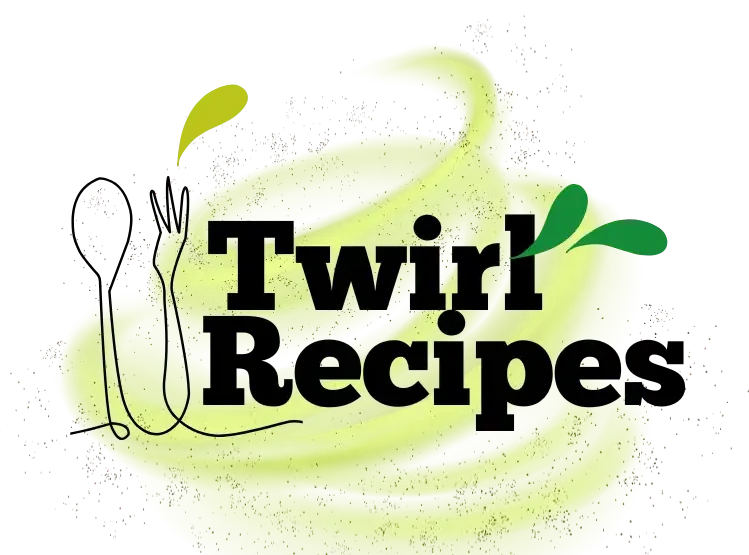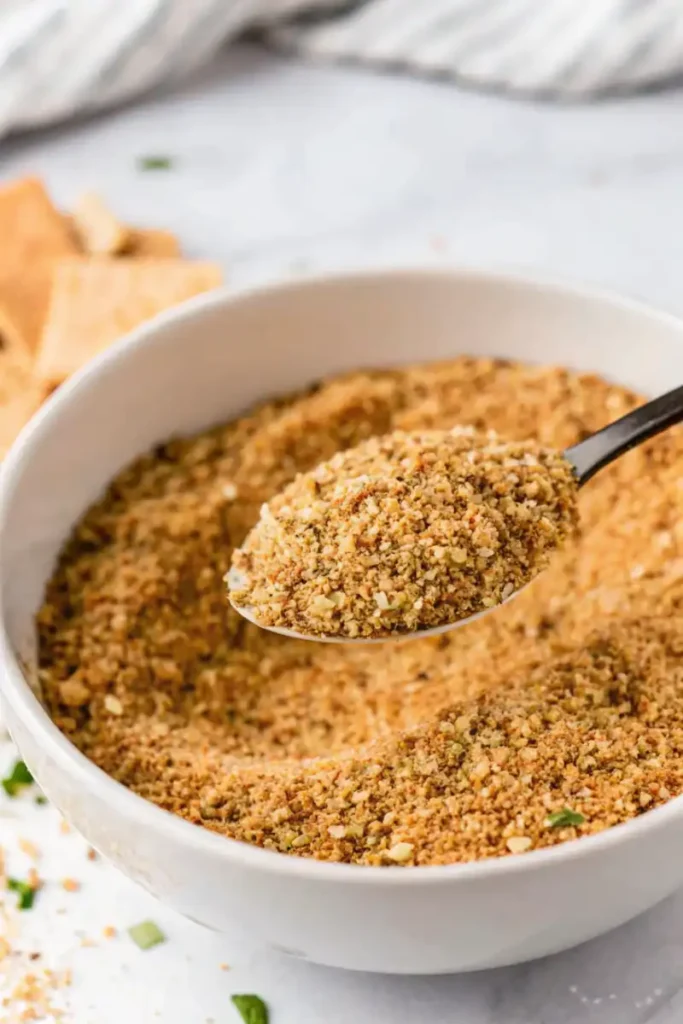Missing the satisfying crunch that traditional bread crumbs add to your dishes? Gluten-free bread crumbs are here to save the day! Whether you’re crafting crispy chicken, a perfect casserole topping, or tender meatballs, this versatile alternative is a game-changer. Plus, they’re a healthier, allergy-friendly option for those on a gluten-free diet.
In this article, you’ll uncover the secrets to making them at home, discover their numerous health benefits, and find exciting ways to incorporate them into your favorite recipes. So, what are you waiting for? Let’s dive in and get cooking!
JUMP TO
- Why Choose Gluten-Free Bread Crumbs?
- Health Benefits of Gluten-Free Bread Crumbs
- Top Ingredients for a Delicious Crunch
- How to Make Gluten-Free Bread Crumbs at Home
- Best Store-Bought Gluten-Free Bread Crumbs Brands
- Delicious Recipes Using Gluten-Free Bread Crumbs
- Tips for Storing and Freezing Gluten-Free Bread Crumbs
- FAQs About Gluten-Free Bread Crumbs
- Latest Recipes to Inspire Your Next Meal
Why Choose Gluten-Free Bread Crumbs?
What Are Gluten-Free Bread Crumbs?
These crumbs are a flavorful, crunchy alternative to traditional bread crumbs. Made from gluten-free ingredients like specialty bread, crackers, or almond flour, they’re ideal for anyone with gluten sensitivities or those following a gluten-free lifestyle. Beyond dietary needs, they’re versatile and add a delightful texture to a variety of dishes.
Why You’ll Love Gluten-Free Bread Crumbs
What’s not to love? They’re simple to make, store beautifully, and lend themselves to both savory and sweet recipes. Plus, they’re incredibly accommodating to dietary restrictions without sacrificing flavor or crunch. If you’re already into gluten-free baking, these crumbs pair perfectly with recipes like Gluten-Free Bagels.
Who Needs Gluten-Free Bread Crumbs?
Anyone with celiac disease, gluten intolerance, or a preference for gluten-free cooking will benefit from having these crumbs on hand. They provide the perfect crunchy texture without the worry of triggering symptoms. Even if you’re someone who simply prefers a gluten-free diet for overall health or lifestyle reasons, these bread crumbs can be a game-changer for creating safe and satisfying meals. From breading chicken to adding crunch to casseroles, they’re a versatile ingredient you’ll love to have on hand!
Health Benefits of Gluten-Free Bread Crumbs
Nutritional Advantages
Did you know that gluten-free bread crumbs can be more than just a substitute? They can actually offer a host of health benefits! For starters, many varieties, especially those made with almond flour or seeds, are lower in carbs and higher in protein compared to regular bread crumbs. This makes them an excellent choice for those on a low-carb or high-protein diet.
Additionally, homemade versions let you control the ingredients—no more hidden additives or preservatives. By using simple, whole-food ingredients, you can ensure your breadcrumbs align with your nutritional goals while still delivering that irresistible crunch.
Ideal for Special Diets
Whether you’re keto, paleo, or simply looking to cut down on processed foods, gluten-free bread crumbs fit seamlessly into your lifestyle. They’re versatile enough to be used in recipes like Sourdough Breakfast Recipes or even a rich casserole topped with a golden, crispy layer.
Reducing Allergens in Recipes
Many store-bought bread crumbs contain allergens like soy, dairy, or even trace amounts of nuts. By making your own or choosing trusted gluten-free brands, you can avoid cross-contamination and cater to a wide range of dietary restrictions. This not only benefits those with allergies but also adds peace of mind when cooking for family and friends.
Top Ingredients for a Delicious Crunch
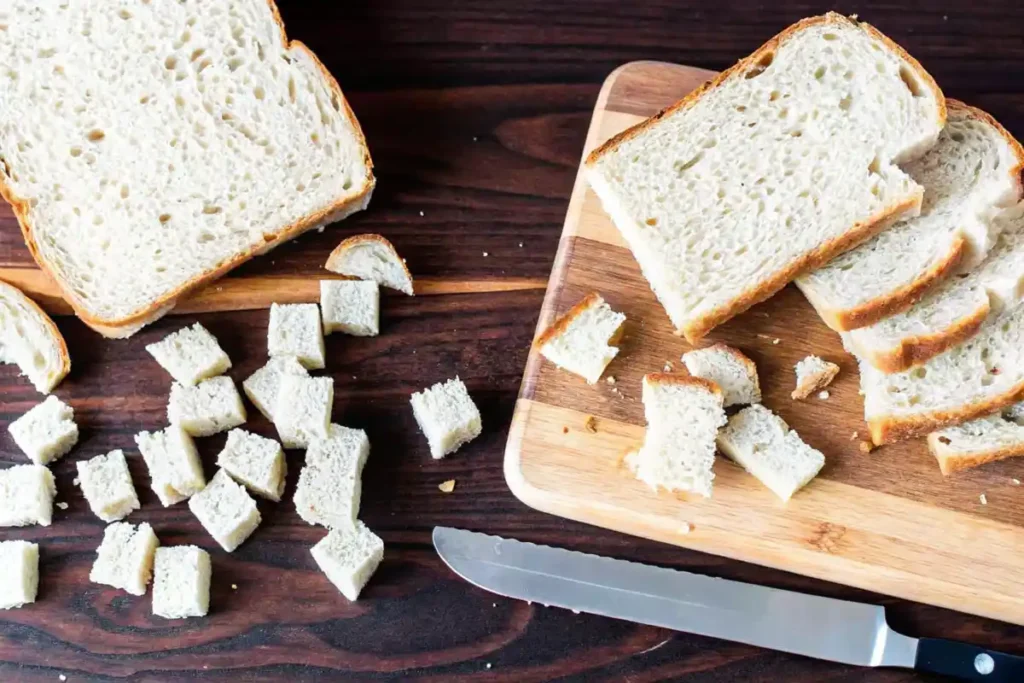
When it comes to creating gluten-free bread crumbs at home, the possibilities are endless. Some of the most popular bases include:
- Gluten-free bread: The easiest and most traditional choice. Toast it, blend it, and you’re done.
- Gluten-free crackers: These add a unique flavor and can be seasoned for extra zest.
- Rice flour or almond flour: Ideal for light, crispy coatings.
- Cornmeal: A great option for breading that needs a bit of extra crunch.
Flavor Enhancers for Extra Zing
Who says bread crumbs have to be boring? Add some garlic powder, paprika, or even Italian seasoning to your crumbs for a flavorful twist. These small additions make a big difference, especially when you’re creating dishes like Gluten-Free Puff Pastry or savory sides.
How to Make Gluten-Free Bread Crumbs at Home
Making your own gluten-free bread crumbs is not only easy but also incredibly rewarding. Here’s how you can whip up a batch in no time:
- Choose Your Base: Start with your favorite gluten-free bread, crackers, or other alternatives like almond flour or cornmeal.
- Dry the Ingredients: Preheat your oven to 300°F (150°C). Slice your bread into thin pieces and lay them flat on a baking sheet. For crackers or other dry bases, you can skip this step.
- Bake for Crunch: Toast the bread slices for 15-20 minutes, flipping halfway through. The goal is to achieve a crisp texture without burning.
- Cool Completely: Let the toasted bread cool completely before proceeding. This prevents soggy bread crumbs.
- Blend or Process: Place the cooled bread in a food processor or blender. Pulse until you achieve the desired crumb size—fine for casseroles and coatings, or coarse for a rustic finish.
- Season to Taste: Add your favorite spices or herbs like garlic powder, parsley, or paprika. This is your chance to customize!
- Store Safely: Transfer your crumbs to an airtight container and store them in the pantry for up to two weeks, or freeze them for longer storage.
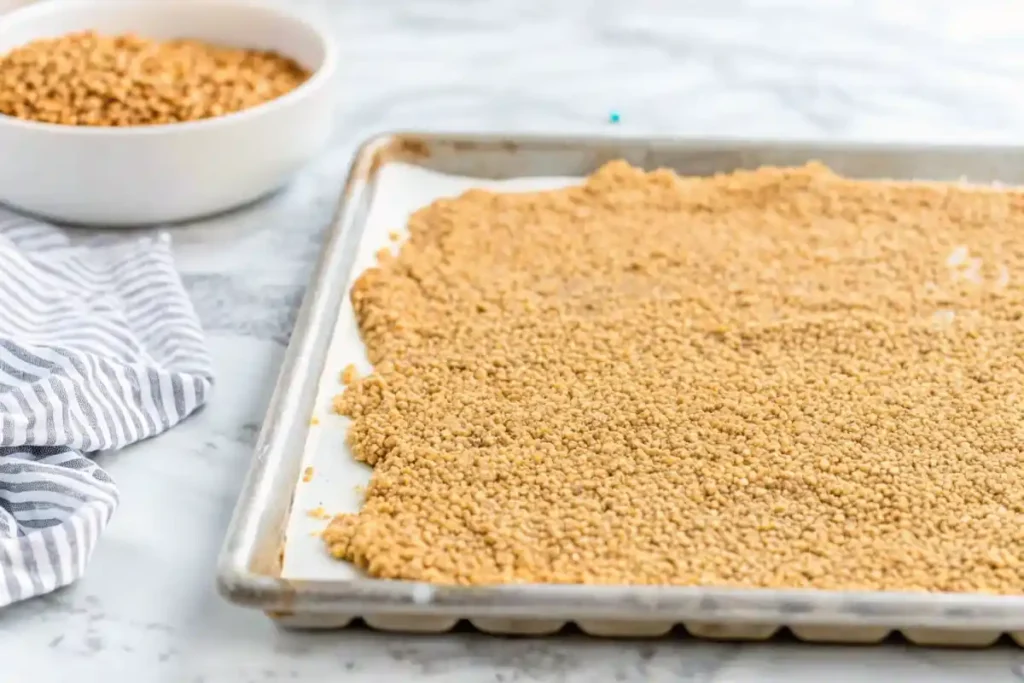
Pro Tips for the Best Results
- For extra crunch, bake the crumbs for an additional 5 minutes after blending.
- Experiment with different bases for unique flavors.
- Always let the bread cool completely before blending to avoid clumping.
Why Homemade Is Better
Homemade gluten-free bread crumbs are a cut above store-bought options, and here’s why:
Complete Control Over Ingredients
When you make your own bread crumbs, you gain full control over every ingredient. For instance, you can choose the best gluten-free bread, crackers, or other bases that align with your dietary preferences. Whether you want to keep it organic, low-sodium, or nut-free, it’s entirely up to you! Homemade crumbs not only eliminate the guesswork of reading labels but also remove concerns about hidden additives or allergens.
Customizable Flavor and Texture
Store-bought gluten-free bread crumbs often have a one-size-fits-all flavor and texture. Making your own lets you tailor the crumbs to suit your recipes. Prefer fine crumbs for delicate coatings or coarse crumbs for a rustic crunch? You can adjust the size with a few pulses in the food processor. Plus, you can season them with your favorite spices and herbs, like garlic powder, smoked paprika, or Italian seasoning, to enhance your dishes.
Convenience and Cost-Effectiveness
Running out of bread crumbs mid-recipe is a hassle, but making a batch at home ensures you’re always prepared. Plus, homemade crumbs are a fantastic way to use up stale gluten-free bread or leftover Sourdough Discard Bagels, turning waste into a kitchen staple. It’s cost-effective and eco-friendly!
Best Store-Bought Gluten-Free Bread Crumbs Brands
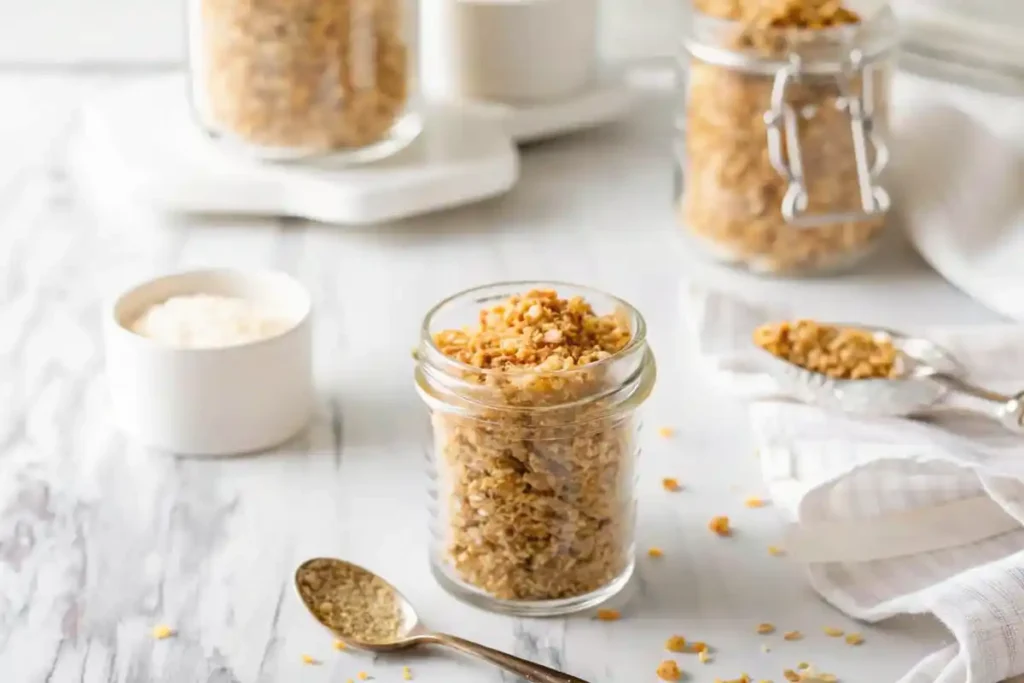
Top-Rated Gluten-Free Brands
If you’re short on time or prefer the convenience of pre-made crumbs, there are some fantastic gluten-free options available. Popular brands include those with clean labels, unique flavors, and a range of textures to suit various recipes.
How to Choose the Right Brand
When shopping for store-bought crumbs, keep an eye on the ingredient list. Avoid brands with unnecessary fillers or allergens. Look for certifications like “Gluten-Free” or “Certified Gluten-Free” for peace of mind.
Delicious Recipes Using Gluten-Free Bread Crumbs
Main Dishes That Shine with Gluten-Free Bread Crumbs
There’s something magical about the crunch that gluten-free bread crumbs bring to a dish. They have the power to elevate everyday recipes into culinary masterpieces. Here are a few must-try dishes:
- Gluten-Free Chicken Parmesan: Coat chicken breasts with your homemade crumbs and bake until golden and crispy. Top with marinara sauce and melted mozzarella for a mouthwatering dinner.
- Crispy Baked Salmon: Create a crust by mixing gluten-free bread crumbs with parsley, lemon zest, and olive oil. Spread it over salmon fillets and bake until flaky.
- Roasted Vegetables: Sprinkle gluten-free bread crumbs over roasted veggies like carrots, Brussels sprouts, or buttercup squash for added texture and flavor.
Snacks and Sides You’ll Love
Gluten-free bread crumbs aren’t just for main dishes—they’re the secret ingredient for show-stopping appetizers and sides. Try these:
- Zucchini Sticks: Slice zucchini into spears, dip in egg, coat with seasoned crumbs, and bake for a healthy, crunchy snack.
- Stuffed Mushrooms: Fill mushroom caps with a mix of cream cheese, herbs, and breadcrumbs. Bake until bubbly and browned.
- Crunchy Green Bean Casserole: Toss steamed green beans with a creamy mushroom sauce, spread them in a baking dish, and top with a layer of gluten-free bread crumbs mixed with crispy fried onions. Bake until bubbly and golden for a crowd-pleasing side.
These recipes pair wonderfully with other comforting dishes like those featured in our Cajun Shrimp Pasta Recipe for a complete and satisfying meal. Try combining these sides with roasted squash or zucchini sticks for a balanced dinner full of flavor and texture!
Tips for Storing and Freezing Gluten-Free Bread Crumbs
How to Store Them Properly
To keep your gluten-free bread crumbs fresh and flavorful, follow these storage tips:
- Pantry Storage: Place your crumbs in an airtight container and store them in a cool, dry place. They’ll stay fresh for up to two weeks.
- Refrigeration: If you’ve added fresh herbs or spices, refrigerate the crumbs to extend their shelf life.
Freezing Instructions for Long-Term Use
For those who love to plan ahead, freezing is a great option:
- Place the crumbs in a zip-top bag, removing as much air as possible.
- Label the bag with the date for easy tracking.
- Freeze for up to three months. When ready to use, thaw the crumbs at room temperature and toast lightly to revive their crunch.
Conclusion
Gluten-free bread crumbs are a versatile, crunchy, and easy-to-make alternative that can transform your cooking. Whether you’re preparing crispy chicken parmesan, creating savory casseroles, or topping your favorite dishes, these crumbs are a must-have in any gluten-free kitchen.
Making your own crumbs at home ensures freshness, flavor, and control over ingredients, while store-bought options provide convenience without sacrificing quality.
Ready to try it for yourself? If so, dive into one of the recipes shared here, or better yet, experiment with your favorite dishes to discover new ways to use gluten-free bread crumbs. What’s more, don’t forget to share your creations in the comments, because we’d love to hear how they turned out! By the way, let us know how gluten-free bread crumbs have transformed your cooking game. Happy crunching, and enjoy every delicious bite!
FAQs About Gluten-Free Bread Crumbs
Which bread crumbs are gluten-free?
Gluten-free bread crumbs are made without wheat or other gluten-containing grains. Popular options include those made from gluten-free bread, crackers, almond flour, or cornmeal. Brands like Schär, Ian’s, and Kinnikinnick offer certified gluten-free bread crumbs that are perfect for breading, toppings, and more.
What is a gluten-free substitute for breadcrumbs?
There are plenty of creative substitutes for traditional bread crumbs that are gluten-free, such as:
– Crushed gluten-free crackers.
– Almond flour or other nut flours for a nutty, crispy coating.
– Cornmeal for added texture.
– Rolled oats (certified gluten-free) for a hearty alternative.
– Even crushed potato chips can work in a pinch!
How is panko gluten-free?
Traditional panko is made from wheat, but gluten-free panko uses alternative flours like rice flour or tapioca starch to achieve the same airy, crispy texture. Gluten-free panko is widely available and perfect for breading chicken, seafood, or veggies. Be sure to look for “certified gluten-free” on the packaging to avoid cross-contamination.
Are Rice Krispies gluten-free?
The original Rice Krispies cereal contains malt flavoring, which is derived from barley and is not gluten-free. However, there are gluten-free versions available, such as those made with rice and free from malt. These can be crushed and used as a crunchy, gluten-free breadcrumb substitute for recipes like breaded zucchini or fried fish.
